 Technology
Technology  Technology
Technology  Humans
Humans 10 Everyday Human Behaviors That Are Actually Survival Instincts
 Animals
Animals 10 Animals That Humiliated and Harmed Historical Leaders
 History
History 10 Most Influential Protests in Modern History
 Creepy
Creepy 10 More Representations of Death from Myth, Legend, and Folktale
 Technology
Technology 10 Scientific Breakthroughs of 2025 That’ll Change Everything
 Our World
Our World 10 Ways Icelandic Culture Makes Other Countries Look Boring
 Misconceptions
Misconceptions 10 Common Misconceptions About the Victorian Era
 Mysteries
Mysteries 10 Strange Unexplained Mysteries of 2025
 Miscellaneous
Miscellaneous 10 of History’s Most Bell-Ringing Finishing Moves
 Technology
Technology Top 10 Everyday Tech Buzzwords That Hide a Darker Past
 Humans
Humans 10 Everyday Human Behaviors That Are Actually Survival Instincts
 Animals
Animals 10 Animals That Humiliated and Harmed Historical Leaders
Who's Behind Listverse?

Jamie Frater
Head Editor
Jamie founded Listverse due to an insatiable desire to share fascinating, obscure, and bizarre facts. He has been a guest speaker on numerous national radio and television stations and is a five time published author.
More About Us History
History 10 Most Influential Protests in Modern History
 Creepy
Creepy 10 More Representations of Death from Myth, Legend, and Folktale
 Technology
Technology 10 Scientific Breakthroughs of 2025 That’ll Change Everything
 Our World
Our World 10 Ways Icelandic Culture Makes Other Countries Look Boring
 Misconceptions
Misconceptions 10 Common Misconceptions About the Victorian Era
 Mysteries
Mysteries 10 Strange Unexplained Mysteries of 2025
 Miscellaneous
Miscellaneous 10 of History’s Most Bell-Ringing Finishing Moves
Top 10 Captivating Graphic Adventures
Long before first-person shooters took over and online multiplayer games collected fees, millions of entertainment seekers were enveloped by a genre known as “graphic adventure.” The next logical step from text-based adventures, the graphic adventure invented the open-world concept in gaming, testing wits and attentiveness over impulses; meaning that, once upon a time, videogamers had to (brace yourself) think before acting.
Whether in first-person or third-person, the point-and-click emphasis and inventory-based gameplay meant tools and conversation skills trumped firepower and platforming, and no great adventure was had without a satisfying plot that rivaled most of the movies playing at your local cinema. With that, these are 10 of the most significant graphic adventure games.
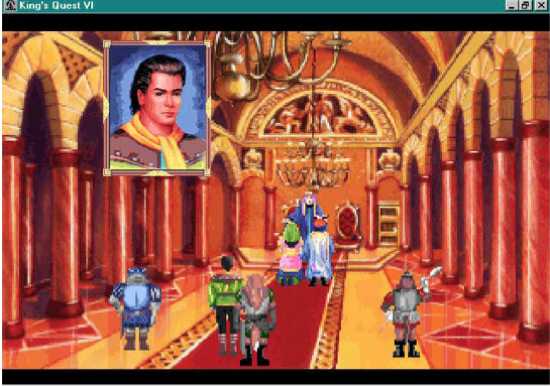
As early as 1984, Roberta Williams was known for her bold and innovative approach to the adventure game, with the medieval themed King’s Quest. Often cited as the first successful graphic adventure title, King’s Quest introduced a captivating sword and sorcery universe that would spawn over a dozen sequels and collections, the biggest fan favorite often cited as 1992’s King’s Quest VI.
The game is a love story at heart, following the path of Prince Alex in his pursuit of the captivating Princess Cassima. In true graphic adventure fashion, wild personalities are introduced and players are rewarded with story and new areas to explore through each solved puzzle. This installment was notable for its leap forward in graphics and aesthetics from its predecessors, let alone alternate endings, achieved through wildly different gameplay paths and branches in storyline.
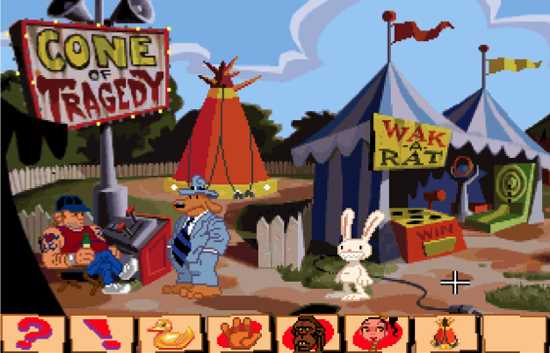
Originally released in 1993, the most acclaimed Sam & Max title is also a source of true nostalgia for a lot of gamers in childhood during its heyday. In a similar aesthetic to Roger Rabbit, private detectives Sam (the hound dog) and Max (the rabbit) first debuted in a comic book series in the late 1980s, before starring in their most memorable PC title to date.
Hit the Road took the pair across the United States in the efforts of recovering a stolen carnival sideshow attraction (who else but Bigfoot, right?). Complete with mini-games and smart-aleck comments from the protagonists, the game’s offbeat humor may have overshadowed even the exploits of its technical influencer, The Secret of Monkey Island. The pair appeared in a couple of sequels before being given the “episodic” treatment with a few digital download games in recent years.
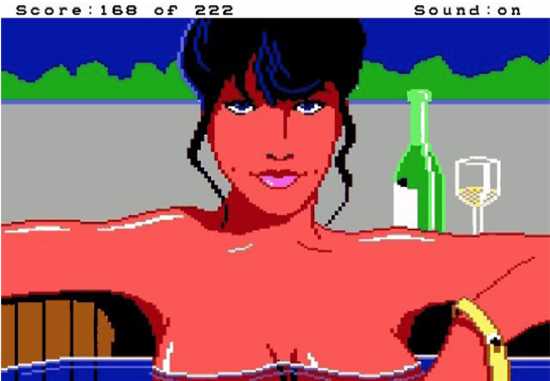
Long before themes of sex were unnerving parents in polygonal form, Leisure Suit Larry was finding itself knocked off retail shelves and practically admonished even by its own publisher, who refused to heavily advertise the game. Therefore, the 1987 title became a top seller largely by word of mouth, placing mature gamers in the role of a wannabe lothario whose entire life revolves around one thing: getting laid.
The 40-something hopeful is guided by the player, trotting around the city and picking up on a variety of women, mostly high maintenance elitists only impressed with Larry’s ability to adorn with gifts and boast a substantial income. Call it dirty, call it degrading, but the Leisure Suit franchise spawned five sequels during the 1990s, not including a remake of the original that was designed primarily to enhance the graphics of the women depicted.
After a few under-performing sequels in the 2000s, a Kickstarter fund was started by a new developer to revive Larry on mobile devices and produce a new HD entry into the series. Larry is the graphic adventure of choice for any player’s inner deviant, and pushed the meaning of “graphic” in the genre to another level more times than once.
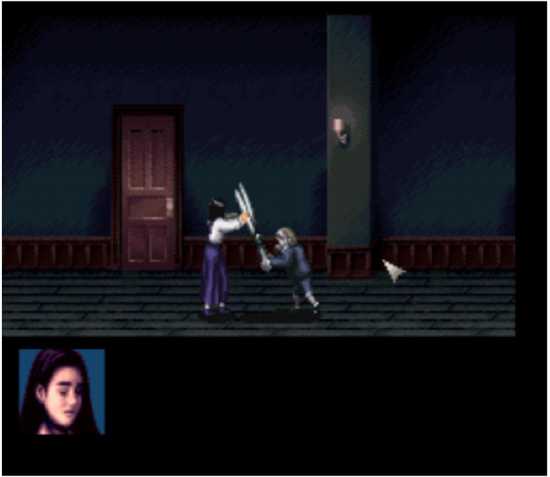
Somehow, when it comes to true horror – the type that really makes you wince and fear – artists from the far East are some of the most talented. Setting the stage for terrifying exports like Resident Evil and Silent Hill, the original Clock Tower in 1995 was exclusive to its native Japan for a long time, but that didn’t stop the game from garnering worldwide attention once the internet was commonplace.
Despite being a point-and-click adventure game at its core, there is a looming survival horror aspect, as the player is constantly stalked by a non-playable psychopath known as Scissorman. This means, at any time, a player must abandon their puzzle and run for their life if the killer in fact enters the same room and attacks them. This was a big departure from the typical “take your time” mood of most graphic adventures. Popularized by a PlayStation port, the game’s construct shifted over its sequels, but the initial version was undoubtedly praised for its genre-bending take on the graphic adventure template.
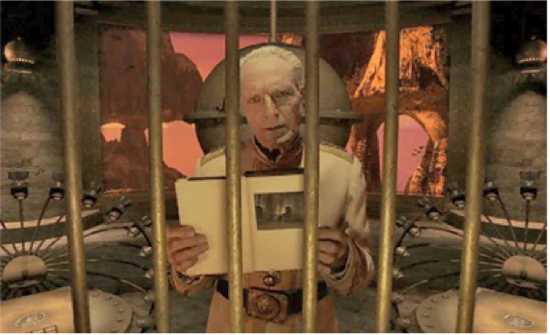
Fans of the original Myst in 1993 had to wait four years until the multi-million selling classic would finally be given its first sequel, Riven. The 1997 installment tested the wits of gamers unlike ever before, and pushed the sanity of its developers to the edge. It was not without reward — the title sold tremendously well, was critically acclaimed upon release, and is still considered by the majority of fans to be the best in the series.
Picking up where Myst left off, players assumes a role that is essentially themselves, never named specifically beyond “Stranger.” Set in a universe where talented authors can materialize actual worlds with mere writings, the player is tasked with rescuing a man’s wife from his totalitarian father who uses said writing talent for self-serving purposes. The game’s beautiful scenery yet dark undertones provided commentary on responsibility versus wrath.
Riven was not produced without several technical challenges due to its frame-by-frame gameplay, which meant even the slightest change in circumstances required every single angle and place in time to be reconsidered for each frame. The puzzle-based difficulty is notoriously brutal without outside help, including false leads and one-time-only clues (see: fire marble domes), not to mention a custom numerical system players must ascertain during gameplay.
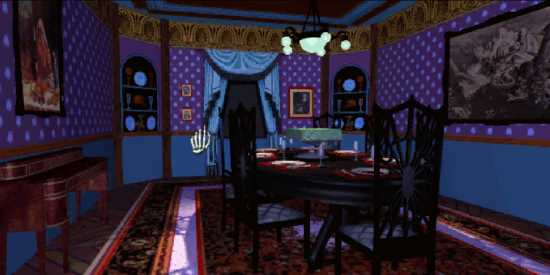
Regarded as the single title responsible for the boom in CD-ROM gaming, the 1993 hit The 7th Guest was a campy yet engaging first-person adventure set in a haunted mansion. The premise may owe a debt to the Mac OS classic Uninvited, but made its own niche with the use of real actors portrayed as ghostly apparitions, fleshing out the backstory and making the player feel like a clairvoyant, let alone investigator.
The plot was morbid, but presented in a TV horror aesthetic that mitigated the heaviness of themes concerning murder and betrayal. A maniacal antagonist teased the player’s performance and offered an unprecedented form of narrative in gaming (think the Haunted Mansion attraction gone wild). In a clever way to aid lost players, a hint system under the guise of a library exists, offering tips on how to solve a majority of the puzzles and aiding the title’s accessibility.
Although met with a less successful sequel, The 11th Hour, the original retains a strong fan base and re-releases have been produced, for formats as recent as the iPad and iPhone. A third installment is still in production at time of this writing, assumed to arrive no sooner than the original’s 20th anniversary.
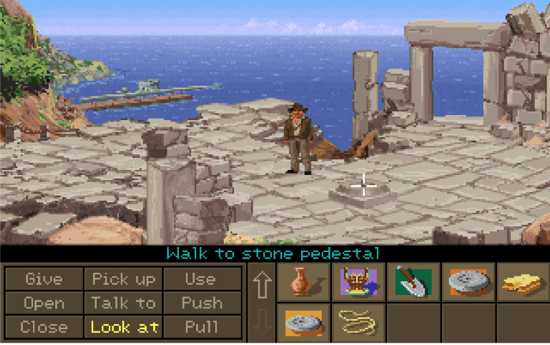
Regarded by many as the “lost” Indiana Jones film in spirit (harsher critics recommending this game over the fourth movie), the 1992 hit Indiana Jones and the Fate of Atlantis introduced a new mythology, new villains, and new damsel testing the patience of everyone’s favorite whip-cracking archaeologist.
Inspired by Plato and his writings of Atlantis, the story concerns Indy in a search for proof of the fabled city, but not without crossing mysterious temples, characters of all cultures, and of course, Nazis begging for a beatdown. Rated “perfect” by various publications during its prime, Fate of Atlantis was lauded for a subliminal educational aspect, let alone having one of the best story arcs among all graphic adventure games. A revamp not long after the original release introduced voice talent, although not of any actors from the film series.
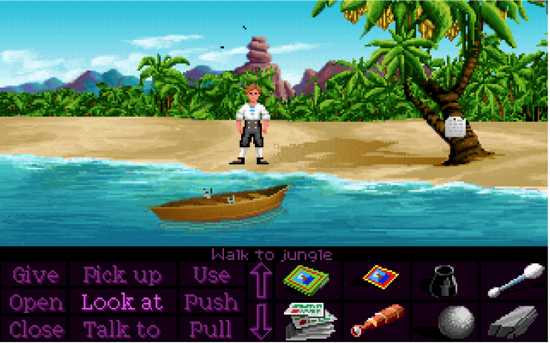
Take Pirates of the Caribbean and mix it with a Saturday morning cartoon (and maybe just a pinch of acid) and you’d come up with the wacky yet revered classic, The Secret of Monkey Island. Released in 1990, this title is likely the one that proved to the world that graphic adventures could be all-ages fun while providing elements of tongue-in-cheek parody and taxing abstract thinking unlike ever before.
As Guybrush Threepwood (don’t worry, plenty of in-game characters already mock the name), you embark on the naive journey to become a pirate; in fact, it’s the first full sentence out of the young man’s mouth. However, when the town mayor is kidnapped, your bravery is put to the test and you must rescue her while adopting the pirate lifestyle, all done in a classic graphic adventure style (sword fighting is not won by real time actions, for example, but through witty insults and comebacks).
Complete with a hilarious cast of characters (including drunken skeletons, and tribal cannibals who speak articulately about their dietary concerns), the world of Monkey Island spawned a few sequels all the way up through the 2000s, including remakes of the first two installments with modern graphics. A movie was even planned at one point, but eventually canceled.
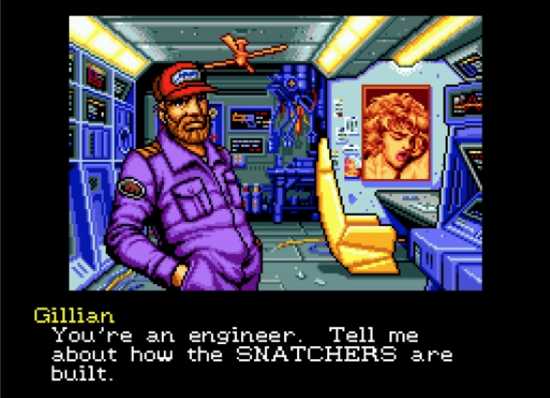
Before moving on to his most successful creation – the Metal Gear Solid franchise – Japanese writer and developer Hideo Kojima started out with adventure games. The most revered and celebrated of these was the Blade Runner-meets-Terminator epic, Snatcher, released in the late 1980s for home computers and the Sega CD in 1993.
The adventure game platform was likely attractive to Kojima due to his knack for grandiose storytelling, rivaling even Hollywood films. Snatcher combines conversations, relationship dynamics, stationary shootouts, and evidence examination, all supported by a twisting plot concerning body-snatching robots and identity crises (not to mention the most blindsiding paternal twist since Darth Vader and Luke). To top things off, the player can be detoured severely if they abuse or misappropriate their interactions with some of the game’s supporting characters.
Hard at work on the latest announcement in the Metal Gear series, Ground Zeroes, Kojima has his plate full and the outcry from gamers for a Snatcher remake may go unfulfilled, at least for a while.
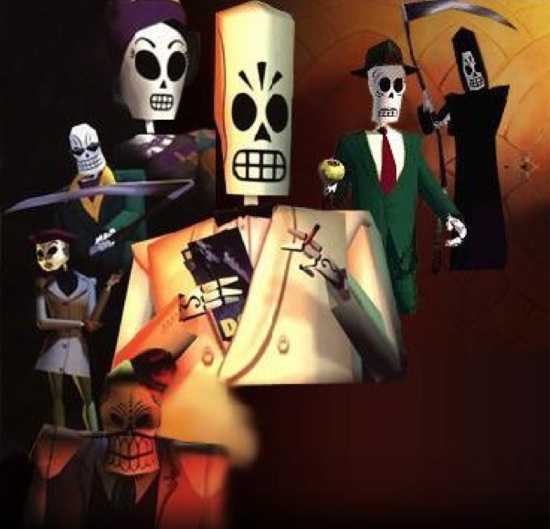
In the greater perspective of graphic adventure games, it seems almost a crime to feature only one title spearheaded by Tim Schafer, adorned by many as one of the most visionary writers and developers in the entertainment industry. However, to keep a balance, this spot goes to Schafer’s most intriguing and technically-advancing accomplishment in the genre thus far.
After getting his feet wet on Maniac Mansion and The Secret of Monkey Island, Schafer co-designed the former’s sequel, Day of the Tentacle. This opened the door for his first solo project, Full Throttle, a biker-themed cult classic featuring the voices of Mark Hamill (Star Wars), Tress MacNeille (The Simpsons), and the late Roy Conrad. Following Full Throttle’s success, Schafer was ready for his masterpiece of the decade, and entered the Land of the Dead (creatively speaking) with 1998’s Grim Fandango.
Players control the skeletal Manny Calavera, a “travel agent” for the newly deceased who accommodates his clients based on their goodness in life. Eventually Manny finds his business is corrupted from the top down, and perfectly good souls are being cheated out of good tickets by a crime lord finagling the agency. Upon discovering his love interest, Mercedes, a victim of this corruption, Manny becomes involved in a noir-style epic to save his woman and find a better life (or, afterlife) for the two of them.
The timing of Grim Fandango’s release marred its commercial success – it arrived at the end of the graphic adventure glory days, and when console gaming started to overshadow PCs in the mainstream. Coupled with the fact the game ran almost exclusively on Windows 98 (later systems requiring patches and tweaks), the title remains elusive for common gamers. None of this hindered the game’s legacy, however, as critics applauded the title with “Best of the Year” awards and fans remain faithful adherents. A glimpse online also reveals urging from numerous gamers to get a working port on download services such as Steam.
In the meantime, Schafer has embarked on a new high exposure venture; his Kickstarter fund in 2012 garnered over $3 million from the public when it was announced he intended to independently produce a new graphic adventure, reintroducing the genre to the masses. At time of writing, the details are unknown, but if history is any indication, the project will be a must-buy for anyone passionate about pristine storytelling and contextual gameplay.
Notable Extras: The fun doesn’t stop there. For those intrigued by this article, other worthy classics to explore that didn’t make the top 10 include: Maniac Mansion, The Journeyman Project, Myst, I Have No Mouth and I Must Scream, Policenauts, King’s Quest, Full Throttle, and The Dig. A few modern blockbusters such as Heavy Rain borrow heavily from graphic adventures, and independent developers are frequently churning out new graphic adventures on the indie games market.








